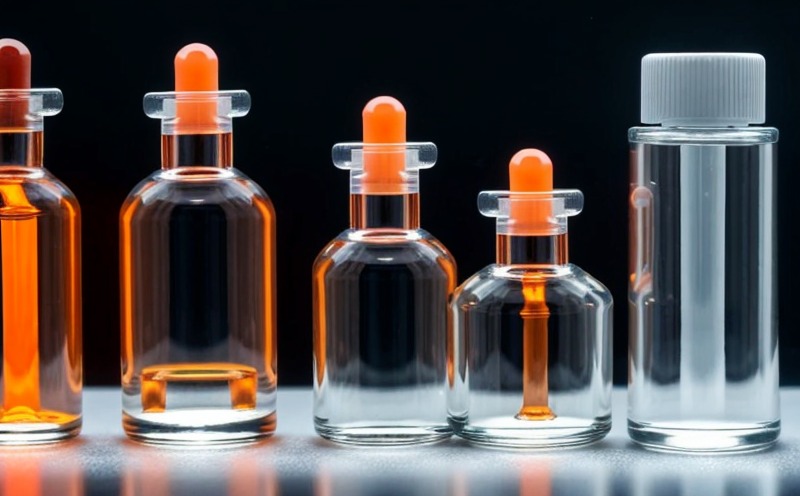ISO 10993 10 Irritation and Skin Sensitization Testing of Nanoparticles
The ISO 10993 series of standards provides a comprehensive set of guidelines for ensuring the safety of medical devices. Among these, ISO 10993-10 specifically addresses irritation and sensitization tests, which are crucial to assess potential adverse effects on human skin when exposed to nanoparticles.
Nanoparticles have gained significant attention due to their unique properties that offer numerous applications in medicine, electronics, cosmetics, and more. However, the small size and large surface area of these particles can lead to different interactions with biological systems compared to larger particles. Thus, it is essential to evaluate them thoroughly for safety concerns.
The ISO 10993-10 protocol involves several stages designed to identify any potential adverse reactions caused by contact between the test substance and human skin. This includes both local irritation (temporary inflammation) and systemic sensitization (long-term allergic response). The tests are conducted using standardized procedures that ensure consistency across different laboratories.
During preparation, samples of the nanoparticle formulations are applied to excised human skin or reconstructed skin models. These preparations may vary based on intended use; for instance, if the material will be used in creams, it would undergo emulsification prior to application. After exposure periods ranging from 4 hours up to 28 days depending upon the type of test (acute vs chronic), the skin is evaluated for signs of irritation or sensitization.
The evaluation process involves detailed clinical observations and measurements such as erythema scores, transepidermal water loss, and histopathological examination. For sensitization testing, additional assessments like patch tests are conducted to detect delayed hypersensitivity responses.
| Parameter | Description |
|---|---|
| Application Method | Topical application to excised human skin or reconstructed models. |
| Exposure Time | Ranges from 4 hours for acute tests to up to 28 days for chronic studies. |
| Evaluation Criteria | Includes erythema scores, transepidermal water loss measurements, and histological analysis. |
| Sensitization Testing | Patch testing to identify delayed hypersensitivity reactions. |
These tests are conducted in compliance with international standards such as ISO 10993-10, which ensures reliability and comparability of results across various jurisdictions. Compliance officers within organizations must ensure that their testing protocols adhere strictly to these guidelines.
The importance of this testing cannot be overstated given the increasing use of nanomaterials in diverse fields including pharmaceuticals where nanoparticles can enhance drug delivery efficiency or cosmetics where they provide enhanced texture and appearance. By rigorously assessing nanoparticle safety through ISO 10993-10, manufacturers contribute significantly towards protecting public health.
Our laboratory offers specialized expertise and state-of-the-art facilities to perform these tests accurately and efficiently. With experienced professionals and advanced equipment, we provide reliable data that helps clients make informed decisions about their products' safety.
Benefits
The ISO 10993-10 irritation and skin sensitization testing of nanoparticles brings numerous benefits to manufacturers, regulatory bodies, and healthcare providers alike. One key advantage is the enhanced assurance that products comply with stringent safety requirements set forth by international standards.
From a manufacturing perspective, this certification process helps build trust among consumers while reducing risks associated with product liability lawsuits due to adverse reactions. Regulatory agencies can rely on consistent test results when approving new nanomaterial-containing products entering the market.
The data generated from these tests also aids researchers in understanding how different nanoparticles interact with human skin at various stages of exposure. This knowledge is invaluable for developing safer formulations and optimizing existing ones.
In terms of healthcare, ensuring that medical devices or topical treatments containing nanomaterials are safe reduces the risk of unnecessary patient discomfort and potential health hazards. It supports better clinical outcomes by providing more effective yet harmless therapeutic options.
Industry Applications
The application of ISO 10993-10 in nanotoxicology extends across multiple industries where nanoparticles play a critical role. In pharmaceuticals, the use of nanoscale drug delivery systems promises targeted treatments with reduced side effects. Ensuring that these particles do not cause irritation or sensitization is paramount.
Cosmetics industry professionals also benefit from thorough nanoparticle testing to guarantee product safety and maintain consumer confidence. For instance, sunscreens containing zinc oxide nanoparticles are designed for broad-spectrum protection without causing skin inflammation.
Environmental health experts rely on these tests to assess the impact of engineered nanomaterials used in pollution control technologies or biodegradation processes. Understanding their behavior helps mitigate any unintended environmental risks.
In electronics manufacturing, ensuring that nanoparticles utilized in circuit boards or display screens are non-irritating ensures consumer safety without compromising product performance.
Environmental and Sustainability Contributions
The pursuit of sustainable practices has become increasingly important across all sectors. In the context of nanotoxicology, ISO 10993-10 testing supports environmental sustainability by helping manufacturers design safer products that minimize adverse impacts on both human health and ecosystems.
By identifying potential irritants or sensitizers early in development stages, companies can avoid using harmful materials altogether. This not only enhances product safety but also reduces waste generation throughout production cycles.
The testing process itself promotes responsible use of natural resources by encouraging innovation around safer alternatives to problematic nanomaterials. Through rigorous evaluation, industries contribute positively towards reducing overall environmental footprints associated with nanotechnology applications.





